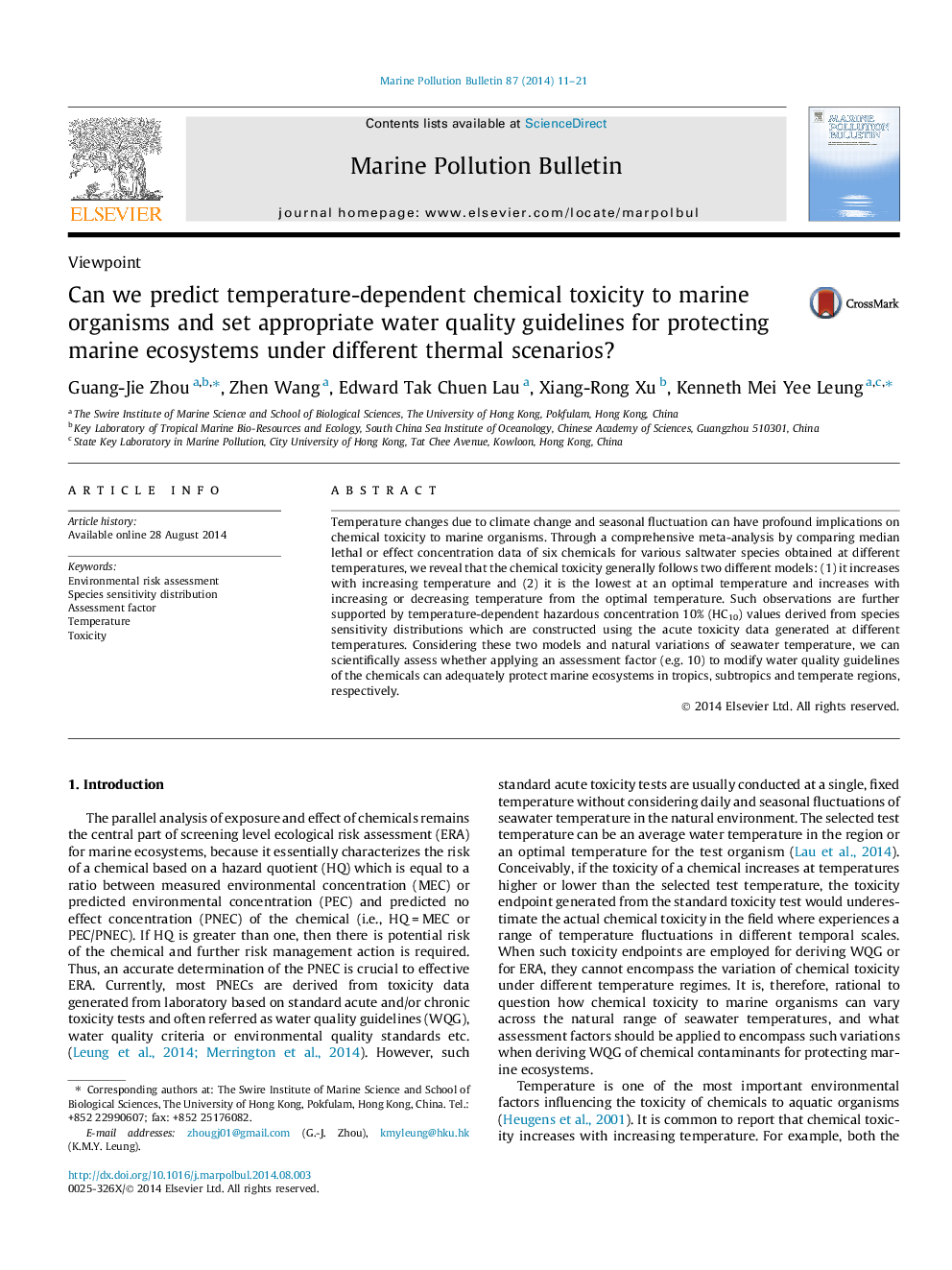| Article ID | Journal | Published Year | Pages | File Type |
|---|---|---|---|---|
| 6357607 | Marine Pollution Bulletin | 2014 | 11 Pages |
Abstract
Temperature changes due to climate change and seasonal fluctuation can have profound implications on chemical toxicity to marine organisms. Through a comprehensive meta-analysis by comparing median lethal or effect concentration data of six chemicals for various saltwater species obtained at different temperatures, we reveal that the chemical toxicity generally follows two different models: (1) it increases with increasing temperature and (2) it is the lowest at an optimal temperature and increases with increasing or decreasing temperature from the optimal temperature. Such observations are further supported by temperature-dependent hazardous concentration 10% (HC10) values derived from species sensitivity distributions which are constructed using the acute toxicity data generated at different temperatures. Considering these two models and natural variations of seawater temperature, we can scientifically assess whether applying an assessment factor (e.g. 10) to modify water quality guidelines of the chemicals can adequately protect marine ecosystems in tropics, subtropics and temperate regions, respectively.
Keywords
Related Topics
Physical Sciences and Engineering
Earth and Planetary Sciences
Oceanography
Authors
Guang-Jie Zhou, Zhen Wang, Edward Tak Chuen Lau, Xiang-Rong Xu, Kenneth Mei Yee Leung,
